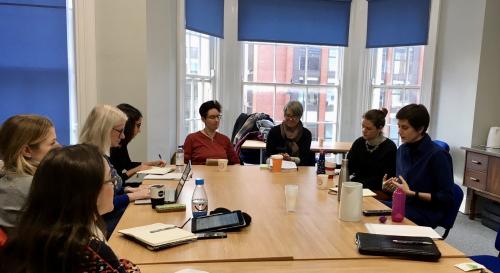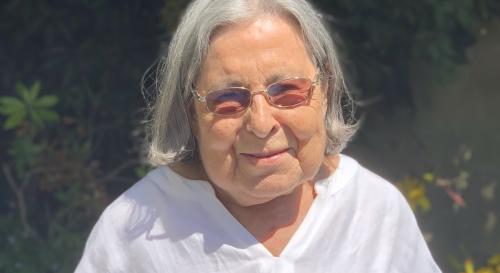
Breadcrumbs navigation
A-Z of IR: Y is for 'Yugoslavia' and Z is for 'Zero-Sum game '
Inspired by the British Academy’s focus on Engaging the Public with Humanities and the Social Sciences (2023), in October 2024, Adrian Gallagher (Leeds) launched an A-Z in International Politics online and free of charge. This 26 part series over 26 weeks introduces key concepts such as A is for Anarchy, B for Balance of Power, C for Cooperation and so forth. They are released on Instagram (Prof_Politics), TikTok (Professor_Politics), LinkedIn, and YouTube (@ProfessorGallagher).
Last month alone this series generated more than 64,000 views and 3500 interactions on Instagram and 8000 views on TikTok. Over the last few months YouTube has had over 1000 views, and LinkedIn around 10,000 views. In total there has been over half a million views across all social media platforms since the conception of this series.
This week we conclude on the letters 'Y' and 'Z'.
Y is for 'Yugoslavia'
Today we are looking into Yugoslavia, its breakdown in the 1990’s and three lessons we can learn in the modern wider political sphere today.
When Yugoslavia crumbled in the 1990’s it consisted of six republics and two provinces. These were: Bosnia and Herzegovina, Croatia, Macedonia, Montenegro, Serbia, Slovenia and the two autonomous provinces of Kosovo and Vojvodina. For the majority of the Cold War, Marshal Tito ruled over Yugoslavia. However his death in 1980 led to a very tumultuous next decade due to an extreme economic crisis, a rise in nationalism and a communist state facing the end of the Cold War. Ultimately, this resulted in a series of brutal identity crisis wars over the 1990’s.
A key actor in this was a man called Slobodan Milosevic. A communist arriving in Kosovo in 1987, he warned of the dangers of nationalism and gave an impromptu speech that fanned the flames of Serbian nationalism. He ended up becoming President in 1989 and tried to create a greater Serbia out of the ruins of Yugoslavia in 1990’s.
The origin of the breakdown of Yugoslavia can be found in 1991 after Croatia and Slovenia declared independence. The Slovenian war lasted only 10 days, but the Croatian war lasted four years total. However, the bloodiest war was the Bosnia - Herzegovina war, which took place between 1992 and 1995, and resulted in 250,000 people killed, mass sexual violence and over two million people displaced. Amongst these, there were 8,000 Muslim men and boys of Srebrenica in July 1995 who would subsequently be classified as genocide. The end of the war came about with the Dayton agreement in 1995, however the overarching crisis was left unsolved.
In 1999, NATO’s military intervention into Kosovo brought everything to a head. Milosevic loses power a year later and by 2003 Yugoslavia is dissolved. Milosevic subsequently faces 66 war crimes, crimes against humanity and genocide charges but dies before the verdict is given. 20 years later and tension still remain high amongst the countries in the region, notably between Serbia and Kosovo. Despite the efforts of the United Nations to state build Kosovo for more than 25 years, some people argue this has created more problems in of itself.
We conclude with three broader world politics lessons we can take away from all of this, the first being ‘complex command structures’. In Kate Ferguson’s study of Yugoslavia she highlights that rulers used private military companies and mercenaries to separate and distance themselves from human rights violations being carried out. This now happens all across the world, for example with Russia’s use of the Wagner group. The second lesson comes under ‘information wars’. In the 1980s, media, particularly in Serbia and Croatia exaggerated and manipulated the threat posed by Muslims. Today we find this happening on an even wider scale, with social media being a massive aid to this. Finally, we can look at ‘Europe’s inability to address crisis in its own neighbourhood, and its over reliance on the US’. Leaders are still juggling this dynamic, and we can see that while history might not repeat itself, it defiantly does rhyme.
Z is for 'Zero-Sum game;
The zero-sum game is often tied to Donald Trump, as many academics claim he is the leading user of such phenomenon. Today we explore, what is the zero sum game and why do people ascribe to it?
Use tennis, or chess, or football as your example in which one player's gain is equal to the other player's loss - both players are unable to win. Naturally the game disincentivises cooperation, because only one person can come out on top. As ABBA would say "the winner takes it all". Trump often talks in zero sum terms - there must be a winner and this must be the US. One notable example of this is his introduction and stance on tariffs despite critics arguing that free trade is better for every involved actor, every actor gains something, and takes a piece of the pie so to speak.
Looking back at the security dilemma, whether Trump believes in the zero-sum game or not is irrelevant, instead it is more important to look at how other leaders view respond to such behaviour. We can see this when Chinese government officials said that US wanted other states to be cannon fodder under the US. This is a form of interpretation, implying Trumps behaviour is being reflected as having an overall belief that the world is a zero-sum game. As a response to this, China, Japan and South Korea had began meeting to talk about their response to US tariffs, despite historically these states having a very rocky relationship. Due to Trump’s actions, they have been forced to respond in a unified way and open up new cooperation avenues. Therefore, while Trump might see the world as a zero-sum game, the rest of the world does not have to. They may retaliate, against the US in a one-on-one tariff war, but might also foster and create new relationships globally. However, Trump then has to work out what his response to such actions are, and with Trump, this sticks us all in a never ending cycle.
Although this series has concluded, we are excited to be hosting an online public engagement workshop with Adrian on Tuesday 10 June. Look out for more details and free registration on our events page.
Photo by Robert Stump on Unsplash


